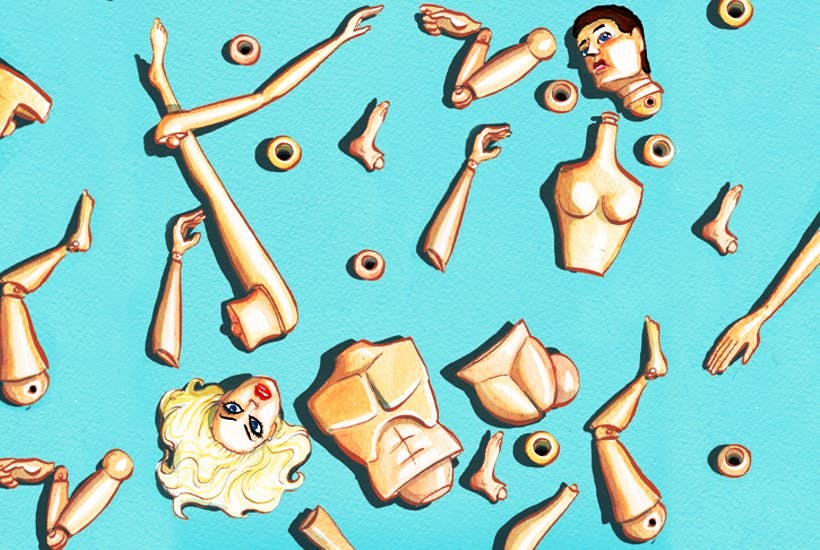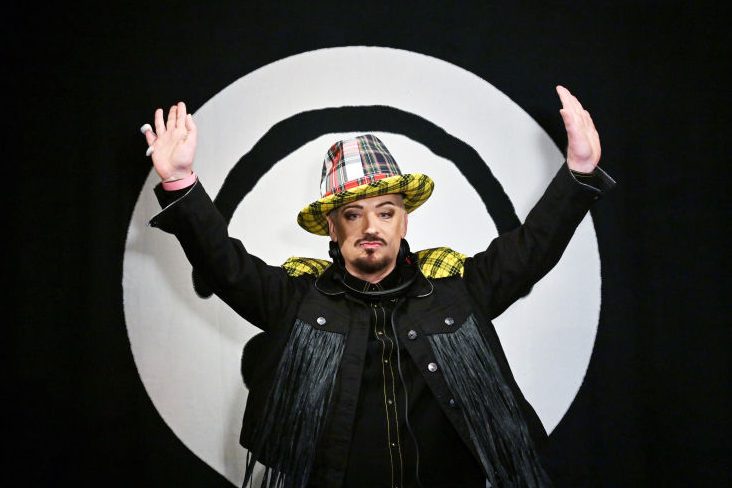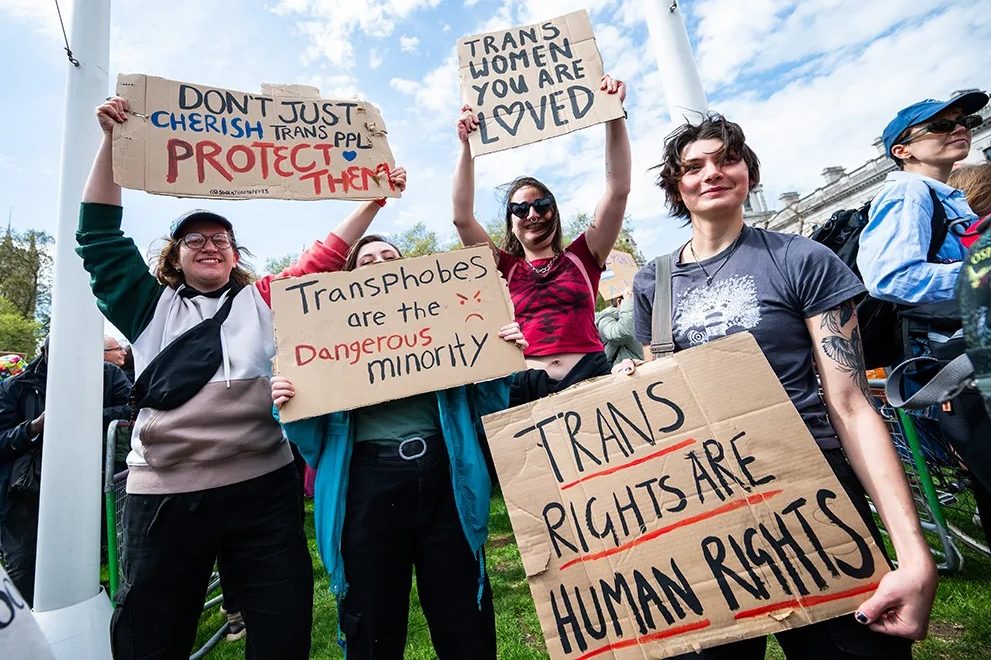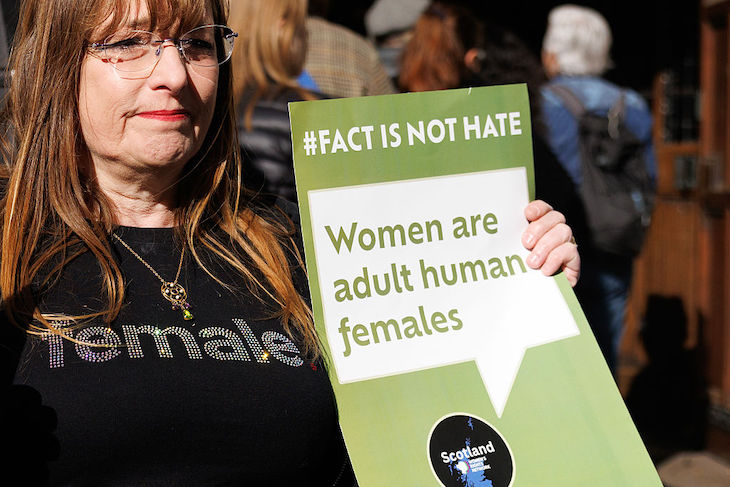When the mist lifts and we can see clearly the carnage caused by the trans madness, and we blink and wonder what in God’s name we did to our kids, I hope we recognize the true heroes of the saga. By this I don’t mean the Jordan Peterson types or even J.K. Rowling, so much as the parents who somehow found the courage to stand up to their own children.
Any child who makes the fashionable decision to identify as another gender is instantly surrounded by a supportive gang of fellow trans travelers — a “glitter family,” they call themselves — who’ll insist that it’s “literally dangerous” for them to stay in touch with doubters. To question your child, when they tell you they’re trans, is to risk them rejecting you for good. As crazy, sad and dangerous as I believe the gender cult to be, my heart fails me when I think about that. Would I risk losing my son? Even for his sake? I just don’t know.
In early January the mother of a child called Samantha wrote her story on a website for the parents of trans kids. She begins: “At the age of 2.5, after her little brother was born, Samantha started pushing back when I tried to put dresses on her. She also started to rebel at the idea of ballet classes and her friends were mostly boys.” By the time she was four Samantha wanted short hair and boys’ clothes, and then she asked if she could be called Sam, because it is a boy’s name.
“At this point, I started to worry,” writes Sam’s mother. So off went little Sam to a counsellor, David, who gave her the inevitable diagnosis. Yes, it’s gender dysphoria, he said, but don’t worry, 80 percent of children with gender dysphoria grow out of it by puberty. In the meantime, while we wait for the dysphoria to resolve itself, it’s safest to “socially transition” her, said David. So Sam became he/him to everyone and “everyone was very accommodating,” writes Sam’s mother. Therapists, doctors, teachers — all were happy to accept Sam’s new identity.
Well of course they were. What else can any modern professional do? Trans doctrine has it that “41 percent of trans kids attempt suicide.” Not to affirm a child’s chosen pronouns might mean self-harm, perhaps a lawsuit, unemployment, ostracization. That stat, as it happens, is garbage. But as it’s heresy to question it, few know to ignore it. So: smile, affirm, give the kid another shove along the road to medicalization.
In some places to question a child’s chosen gender is illegal “conversion therapy.” Even Britain’s tidy little PM has said he might ban conversion therapy. If heads of government buy into the madness, why should health professionals resist? “Follow Sam’s lead, she knows best,” said David, though Sam was only four.
When Sam was six her mother took her to a doctor, who looked her straight in the eye and asked: “Do you want to be a boy?” “Sam immediately replied ‘Yes,’’’ her mother writes. “Then the doctor asked, ‘Do you want breasts like your mother or a beard like your father?’ Sam said, ‘A beard like my father.’ The doctor replied: ‘No big deal, we will just give Sam puberty blockers in a few years… It is totally reversible.’”
It’s weird how straitlaced progressives are. At no other point in history would the existence of a boyish girl have raised the idea that she might actually be a boy in some metaphysical sense. But because we’ve been marinating, for a decade, in the glutinous language of critical gender theory, it’s become normal to think a boyish girl or a girlish boy needs treatment. Sam’s mum was primed. We’ve all been primed. I’m just lucky no one thought like this in the 1980s.
Sam’s story, right up until David the counselor enters the scene, will be familiar to any number of us who were once called tomboys. As a child it never occurred to me that it wasn’t infinitely preferable to be a boy. I liked my hair short, climbed trees and collected knives. If you’d asked me, any time in the first twelve years of my life, if I’d like to be a boy, I’d have said yes, no question. And if a serious-looking medical man had given me that beard/boob dilemma, I’d have answered same as Sam. I was as hungry for adult attention, and it’s clear as day to any kid which answer will keep you in the spotlight. And what six-year-old girl wants breasts?
“To support Sam, I looked for children’s books about trans kids such as I am Jazz or Red: A Crayon’s Story,” writes her mother. “Perhaps the hardest step for me was when I shaved Sam’s hair off. I cried so hard but I did it because I loved Sam so much and wanted to support her. I even bought Sam a she-wee so she could pee standing up like the boys. I also looked into children’s packers so Sam could have a bulge in her pants.”
If a fake crotch bulge for a prepubescent girl seems outlandish, I’m afraid that’s only because you’re not fully submerged in the new normal. Just you wait until your family faces its own trans nightmare. And if it does, you might take heart and guidance from what Sam’s mother did next.
Because she kept asking questions and kept thinking for herself, she began to see through the whole gender charade. If puberty reverses 80 percent of these kids’ gender dysphoria, why am I being advised to delay puberty? she wondered. And: “Why do all these so-called experts only have one answer? Where are the stories of the 80 percent that reverse their gender dysphoria?”
So Sam’s mother decided to overturn the process. She told everyone they knew that Sam was, after all, a girl and then had what she thought would be the tricky conversation with Sam herself. It went like this: “Sam, we think that living with this secret that you are a girl is not healthy so we are going to start using she/her pronouns.” “And guess what?” writes Sam’s mother. “Sam was extremely relieved. We never saw her so happy.”
I think about what David said: parents, take your lead from the four-year-old. And then about Sam’s relief when the adults were back in charge. It makes my blood run cold.
This article was originally published in The Spectator’s UK magazine. Subscribe to the World edition here.

























